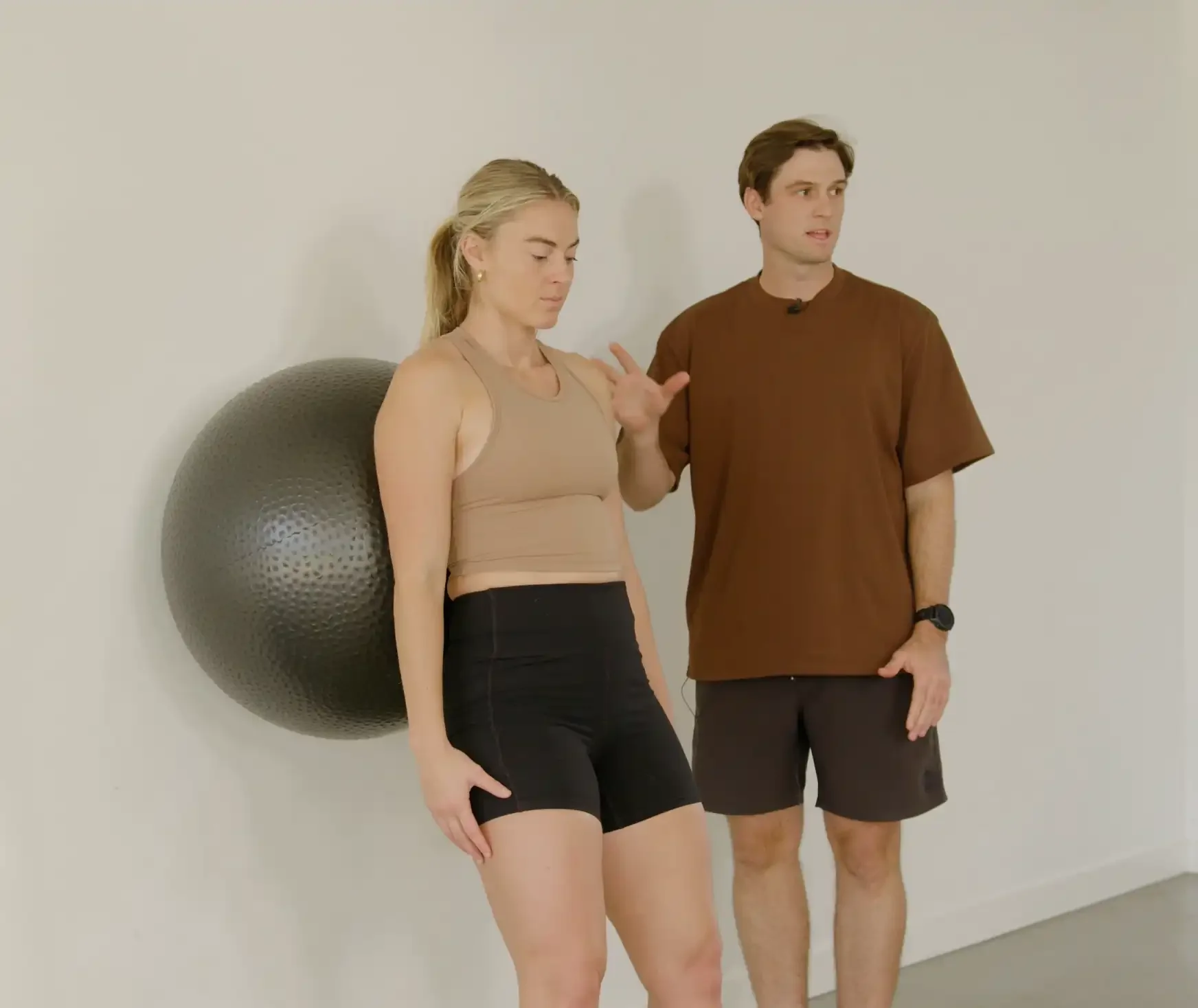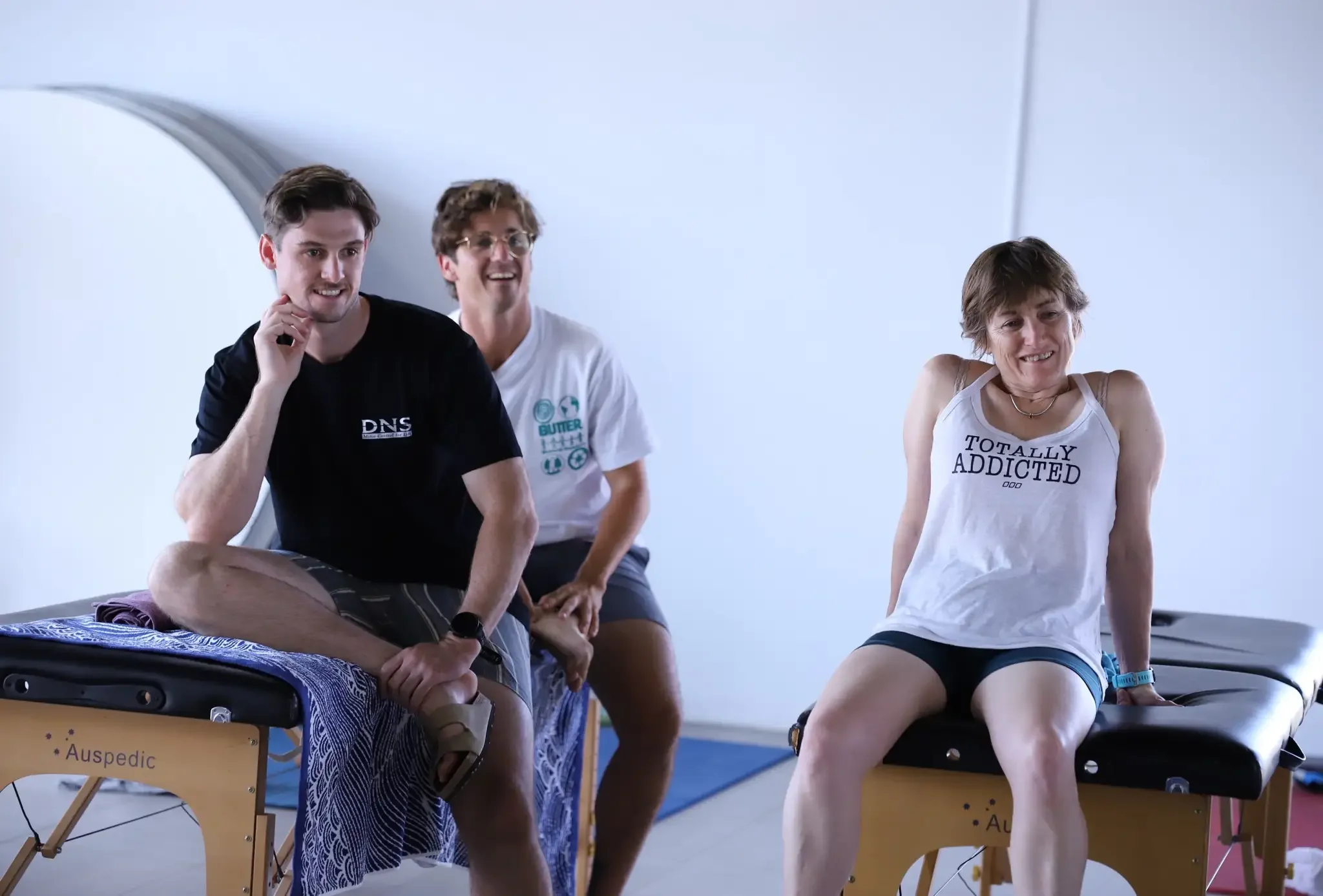What to Expect During Your First Chiropractic/Osteopathy Consultation
That first step onto the treatment bed can feel both hopeful and nerve-wracking. If you're tired of quick-fix remedies that never quite stick, you're not alone - pain has a way of circling back when it's not adequately addressed.
New can feel uncertain, especially when you're lying down on a table, trusting someone with your spine or joints. What's this crack? Will it hurt? These are fair questions - and it helps to know exactly what kind of support you're walking into.
At Forma Health & Rehabilitation, we meet you where you are - whether you're chasing peak performance or seeking relief from daily discomfort. Our hands-on approach helps you move better, feel stronger, and stay active, long after your first visit.
Preparing for Your First Visit
That first step into Forma Health & Rehabilitation isn't just about showing up - it's about walking in prepared. At our clinic, we start strong by ensuring you have the correct information and materials to help us help you. Bringing the right items makes your first consultation smoother and sets the tone for everything that follows.
What to Bring and Prepare Beforehand
Before you head in, gather documents and details that paint the whole picture. Make sure to bring:
Any current medications or a list of issues
Previous scans or imaging, like MRIs or X-rays, if you have them
Health insurance card and know your coverage details
These help our practitioners understand your health history and avoid guessing. The more context we have, the better we can assess the root cause of what's going on.
What to Wear for Comfort and Assessment
Comfort matters, especially when you'll be moving through tests and assessments. It's best to wear clothing that's loose and allows flexibility - think gym gear or your comfiest cottons. If needed, we'll provide a gown so our team can assess your posture or muscle activity. Avoid stiff jeans or tight belts. And wear shoes that are easy to take off.
Setting Expectations Around Your First Appointment
Your first session with us usually runs for 45 to 60 minutes. You'll start with a deep conversation about your health, followed by physical assessments. If your case allows, treatment may begin that same day. Have private health insurance? Let us know so we can help you claim on the spot using HICAPS, where eligible.
Patient Communication and Consent
We spend time talking with you, not at you. You're encouraged to share everything, even small details that seem unrelated. During your session, we'll clearly explain any proposed treatment, the potential results, and ensure you're entirely comfortable before we begin. Nothing happens without your permission. It's always your body, your rules.
The Consultation Process
Your first visit isn't rushed, and it's not surface-level. It's all about understanding who you are, how you move, and what's been holding you back. This isn't about chasing pain - it's about discovering how your whole system works together, or doesn't.
Understanding the Philosophy Behind Care
At Forma Health & Rehabilitation, we approach treatment differently. Chiropractic care aims to support joint function and realignment using structured techniques. Osteopathy focuses on how everything connects - muscles, bones, nerves, and even how you breathe. The goal? Treat the underlying cause of the issue rather than just calming symptoms. It's all built on a belief that your body can heal when given the correct input.
Getting to Know You: Case History Discussion
This is where your story matters. We want to know about your daily habits - how you sit, sleep, move, and work. Past injuries? Training history? Stress levels? All of this helps us understand how your system operates. Your body is a map, and these details spotlight what needs attention the most. You get to talk, and we listen.
Physical Examination and Assessments
Next comes testing, but it’s far from scary. We'll assess your posture, the way you walk, your range of motion, and muscle tone. You might do small movements while we observe. Depending on your needs, we may check your nerves, reflexes, and how different joints respond to touch or pressure. We look at how you breathe, stabilise, and move - not just where it hurts.
Diagnosis and Treatment Planning
Once we've got the whole picture, we shift to interpreting what we saw. At Forma Health & Rehabilitation, we’re not guessing. Our job is to connect the dots so we can work out why your body ended up compensating in the first place.
Making a Preliminary Diagnosis
Based on your assessment, we’ll pinpoint the dysfunction in your musculoskeletal system. Whether it’s chronic tightness, joint restriction, or a movement pattern off-track, it all gets noted. We’ll also rule out anything more serious than might require medical referral. This foundation keeps your care safe, specific, and well-targeted.
Creating a Personalised Treatment Plan
Your plan isn't copied from some chart - it's designed just for you. Together, we'll map out what success looks like. That might mean easing pain quickly, moving better at work, or getting back to sport. We'll guide you through frequency, expected recovery time, and checkpoints along the way, nothing cookie-cutter here - just a clear plan made with purpose.
Choice of Treatment Modalities
If your condition suits it, treatment may begin on that first day. We'll walk you through the available options, including manual therapy, breathwork, and neuromuscular activation. If your case is complex, we may suggest a separate scheduling for a deeper focus. Either way, you'll know the plan before anything starts.
Treatment Techniques You Might Receive
No two bodies are alike, and neither are the treatments. What we use for an elite runner may differ from what someone recovering from a desk-induced shoulder slump needs. Our methods adapt to your needs, and they're all firmly backed by evidence.
Chiropractic Adjustments and Mobilisation
Chiropractic adjustment involves gentle and precise joint movement. Yes, you might hear a "click," but it's just gas releasing as the joint shifts. It's not bones cracking. Mobility improves, tension eases, and your nervous system gets a recalibration. Mobilisation is similar, but usually slower and a little more subtle in feel.
Osteopathic Manipulative Techniques
In osteopathy, hands talk to tissue. We use techniques that stretch, balance, and engage the body's natural rhythm. This may include joint articulation, soft tissue release, and even targeted work near the organs (visceral) or skull (cranial). The aim? Support your system from the inside out, helping everything work together instead of in a tug-of-war.
Complementary Therapies and Modalities
Many sessions include supportive tools like corrective exercises, DNS-based movement retraining, massage therapy, or dry needling. We may also use strapping or taping techniques, especially for athletic performance or injury recovery. These are the extras that help maintain your progress between visits.
After the Session: What Comes Next
Stepping off the treatment table is just the start. What happens after is just as important, because healing does not occur only in clinic hours. Your body continues to adjust and recalibrate after each session.
How You Might Feel Afterwards
It's common to feel lighter, looser, or even energised after your appointment. But don't be surprised if you feel a little sore or tired later that day. It's like starting a new workout - you're moving in ways your body forgot. This response usually settles within 24 to 48 hours.
Guidance Between Visits
You won't leave empty-handed. Your practitioner might give you simple at-home exercises, postural tips or breathing drills. These help extend the benefits of treatment. Even small changes, such as adjusting your sitting position, can reinforce your body's gains between visits. Think of them as your homework for healing.
Follow-Up Appointments
Based on your progress, we’ll advise how often to return. In the early stages, sessions might be more frequent. As things improve, they’ll space out to support longer-term recovery. Some clients continue with occasional visits to maintain mobility and avoid setbacks.
Long-Term Benefits and Choosing Care
Getting treated isn't just about fixing what hurts now - it's about making sure that same pain doesn't keep walking back through the door. That's the bigger picture we focus on at Forma Health & Rehabilitation.
Importance of Ongoing Care
Ongoing care helps keep your system balanced, responsive, and strong. Even once pain fades, sticking with occasional check-ins can prevent flare-ups and sharpen movement quality. It's like tuning a well-used instrument - you stay aligned and feeling confident in how your body moves.
Finding the Right Health Practitioner
Choosing someone to trust with your care matters. At Forma, our team blends 25+ years of experience with a calm, thorough approach. From DNS practitioners to osteopaths and chiropractors, we work together as one team. You’ll feel heard, supported, and guided through realistic steps to move better, live freer and feel stronger.
Common Patient Concerns, Myths, and Clarifications
We get it - chiropractic and osteopathy come with a lot of questions. And myths. That’s why we make time to talk, not just treat. Let's clarify a few things that often come up.
Addressing Safety and Effectiveness
Your safety is always front and centre. Both chiropractic and osteopathic practices are highly regulated in Australia and grounded in science. We follow evidence-based methods, always conducted with your comfort and consent in mind. There's nothing mystical - just expertise, skill, and experience you can trust.
Supporting Informed Choice and Confidence
Your health choices deserve respect, and we're here to support, not push. If something doesn't feel right, we pause. If you want to explore options, we can discuss them. Shared decision-making sits at the core of how we work - it's your process, and we're here to walk beside you.
Your Body's Been Whispering - It's Time to Listen Finally
You already know something's been off. That stiffness creeping in, the ache after sitting too long, the nagging pull when lifting your gym bag - it's your body waving a flag, not just grumbling in the background. Facing it head-on is far less intimidating than letting it linger.
Taking the first step doesn't mean diving into something overwhelming. It’s simply about starting a conversation with someone who knows how to listen to your muscles, your joints, and your everyday struggles. Most folks walk away from their first session feeling lighter, clearer, and surprised that care can feel this personal.
At Forma Health & Rehabilitation, we make sure your first chiropractic or osteopathy consultation feels clear, reassuring, and refreshingly human. Book your session today and let's get your body moving better together.
Frequently Asked Questions
Will I Get Treated on the First Visit?
Most of the time, yes - if your case allows it. Our focus is on a thorough assessment first. If it's safe and appropriate, treatment begins that day.
What If I'm Nervous About the Adjustment?
That's perfectly normal. We explain what to expect and only proceed if you're comfortable. We'll always offer alternatives if manual adjustments aren't your thing.
How Much Does it Cost and Is It Covered by Insurance?
Initial consults vary, but we offer on-the-spot claiming for most private health insurers. Bring your card and we'll help you check your rebate.
How Often Should I See a Chiropractor or Osteopath?
This depends on your needs and goals. Early on, visits may be weekly. As you improve, we space them out for maintenance and prevention.
What Are the Side Effects of First Adjustments?
You might feel slightly sore or tired, similar to post-exercise discomfort. This usually fades in 1–2 days and shows your body's adjusting.


